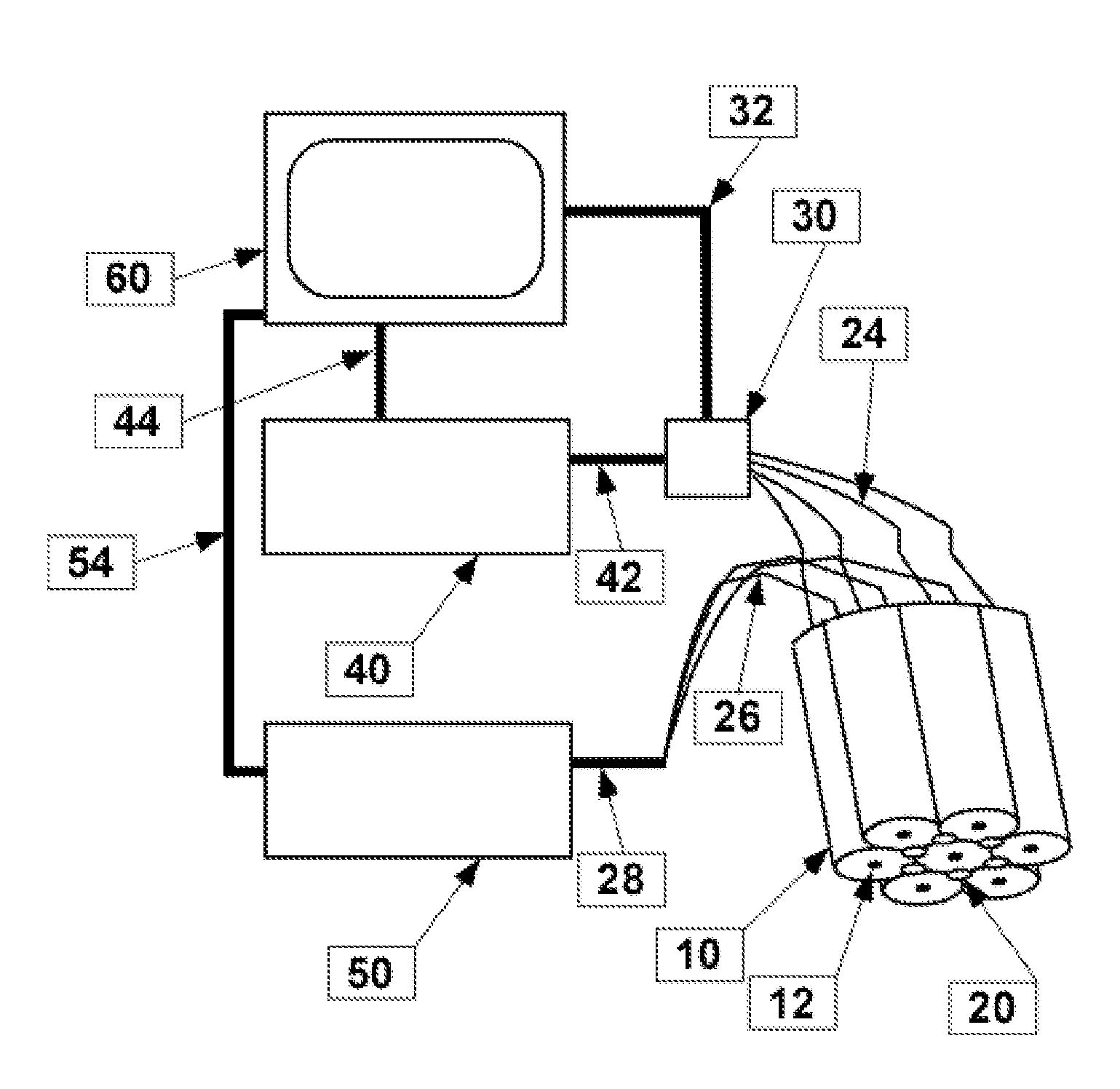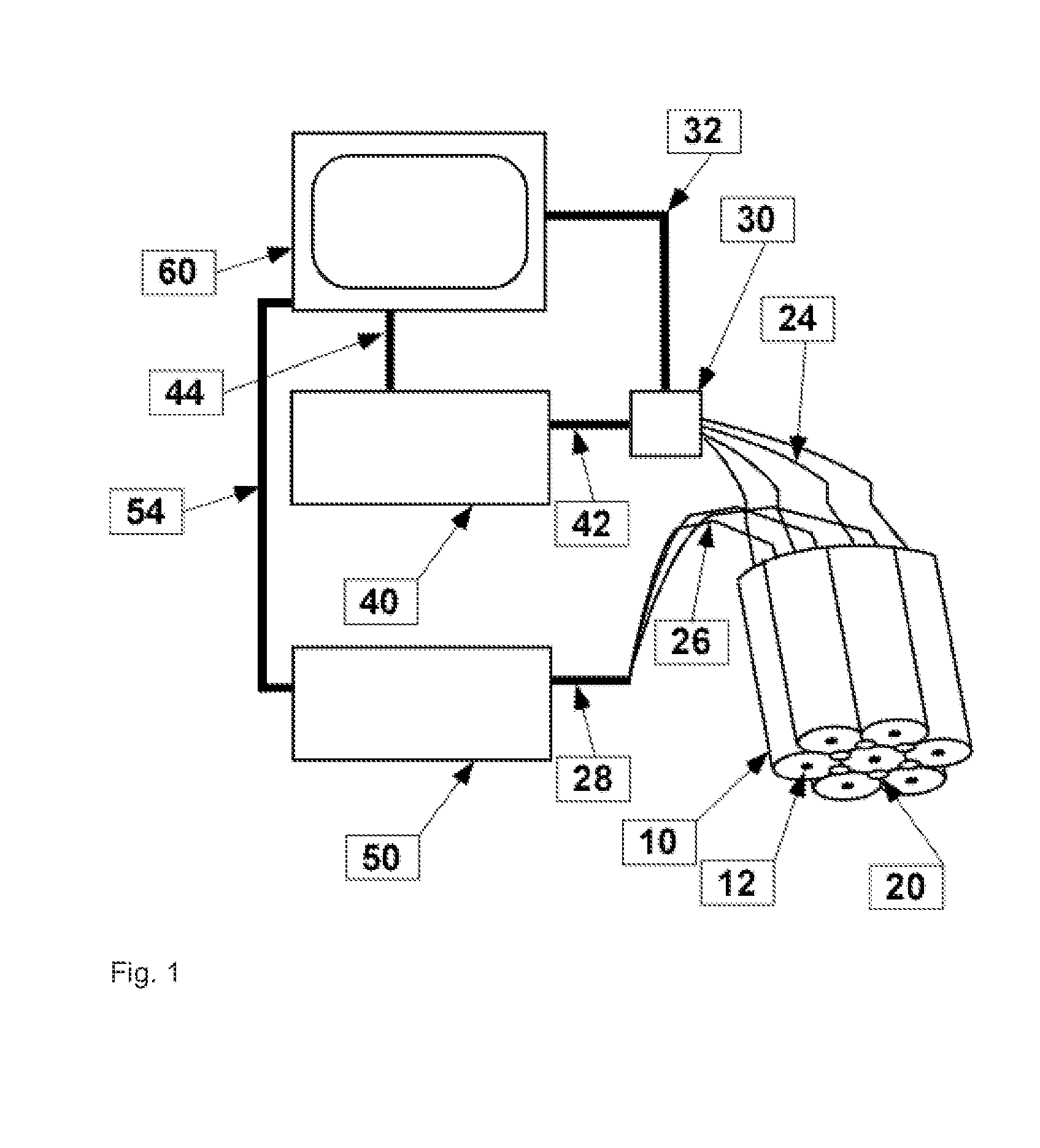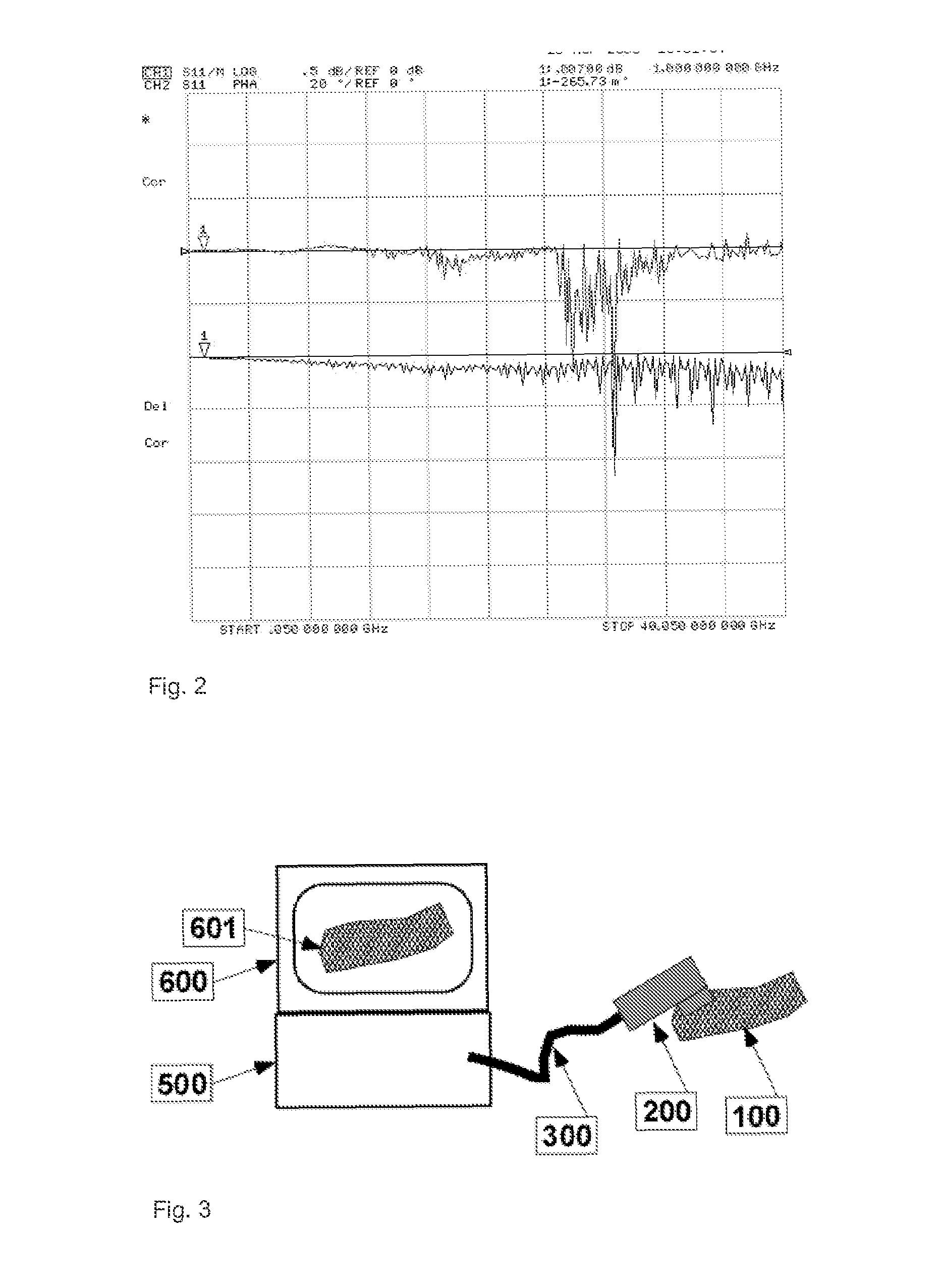[0005]Short electrical impulses (in the range of 1 to 100 ps) have correspondingly broad frequency spectra,
ranging from the
microwave through the
millimeter-wave regime. Alternatively, frequency-swept or single-frequency sources covering this range or a subset thereof can provide the required stimulus to perform spectroscopic imaging. Electromagnetic energy in this range has shown
efficacy in spectroscopic imaging for detecting both surface and sub-surface anomalies, since, for example, tumors and
scars of the skin show strong and specific absorption and dispersion in the 0.001-300 GHz range. Gaining spatial resolution at dimensions much smaller than those normally dictated by the wavelengths being used is done with an array of near-field antennas (e.g.
coaxial probe tips). Such arrays channel the electromagnetic energy to and from the object (e.g.
tissue surface or sub-surface) enabling a new and informative image of the tissue or cells to be formed. With visible (e.g.
fiber-optic) imaging co-located with the array, two types of images can be collected simultaneously and overlaid on a computer screen for a more accurate diagnosis. This can be an aid in diagnosing the type and extent of potentially malignant tumors of the skin. Furthermore, the
visible imaging ability can enable an accurate mapping of the
skin surface so that an irregular scan of the skin will nevertheless build up a fully registered image.
[0006]The present invention consists of an array of near-field antennas that can image tissue or cells using the reflection of both visible light and micro- and
millimeter-wave signals, which can result from electrical pulses, swept continuous-wave wave (CW) signals, or a combination thereof. Such micro- and
millimeter-wave
dielectric contrast between cancerous and
healthy tissue has been resolved on freshly excised skin tumors using these techniques. While visible light helps physicians diagnose the presence of many tumors, the sub-surface condition of the skin or other tissue, hence the extent of the potential tumor, is difficult to assess, and must usually be diagnosed by
surgery, which may require successive biopsies. By using an array of near-field probes, which can be co-located with a means for imaging in the visible or sub-visible illumination, the present invention offers a unique tool for diagnosis of tumor boundaries, reducing the pain and disfigurement of
surgery, or speeding the achievement of an accurate diagnosis.
[0007]
Skin cancer (
basal cell carcinoma or BCC) is not only the most common of all cancers, but also is a rapidly growing
disease, especially in the United States, where since 1973 the incidence rate for
melanoma has more than doubled. While
melanoma accounts for only 4% of skin cancers, it causes 79% of deaths from the
disease, and 54,200 new cases in the U.S. will be diagnosed in 2003 (American
Cancer Society, 2003). Diagnosis of BCC is done visually and with Mohs surgery, which involves repeated removal of tissue and examination under a
microscope. Diagnosing the presence of a tumor and knowing its extent without performing surgery would save money, pain and even lives. The need for accurate
pathology of specimens in general is extremely high, and even small increments in accuracy will result in lives saved.
[0010]The present technology is based on electronic circuits, and has already proven itself in a variety of other spectroscopic applications.
Broadband (as opposed to single-
wavelength) imaging has the chief
advantage of flexibility: differences in skin composition, even on a
single patient, can lead to different diagnoses if only a single-
wavelength or
narrowband source is used. A source with a broad range of frequencies maximizes the opportunity to detect the signature of a surface and even a sub-surface skin anomaly. Furthermore, time-gating of either a real or a synthetic pulse can enable sub-surface spectroscopic imaging while ignoring the return from the surface. With computer-based control, the present technology allows building of a “trainable” detection
system with the capability to ultimately learn the signatures of different skin conditions. Furthermore, the advantages of the present approach to screening over other purely-
visible imaging techniques include smaller size, lower cost, and potential for integration directly with other
imaging modalities such as
ultrasound and visible,
infrared and
ultraviolet imaging techniques such as cameras.
[0011]The present invention may be carried out to make
broadband dielectric reflection measurements of skin. Spectral measurements can be performed to link the
dielectric response to composition of the target.
Imaging array techniques can be utilized to improve the detection and location of the target, since
fiber-optic light pipes can be used as endoscopes. The integrated-circuit nature of the technology enables arrays to be built as extensions of single-pixel proofs-of-principle.
 Login to View More
Login to View More  Login to View More
Login to View More 


